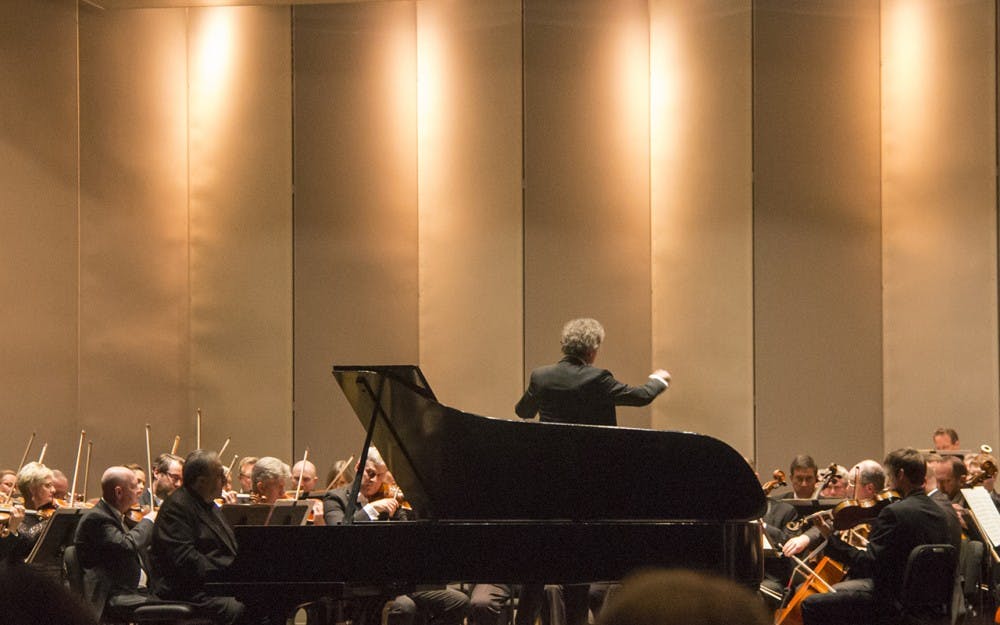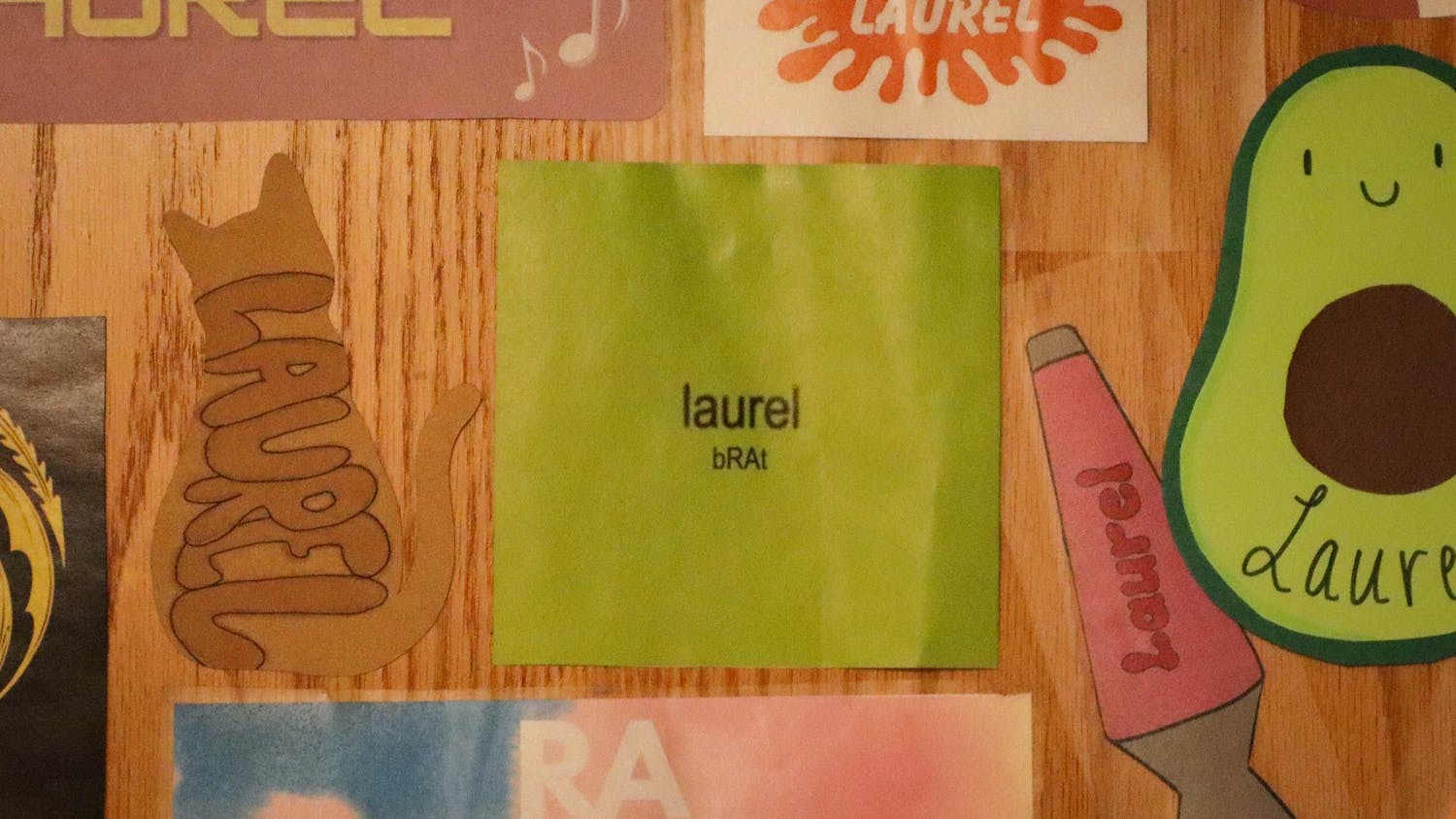One of the world’s most celebrated ensembles took the stage Thursday night in the IU Auditorium, and nearly 2,000 people were there to watch.
The Cleveland Orchestra presented its program to mark the end of its biannual residency at the Jacobs School of Music.
Under the baton of Austrian conductor Franz Welser-Möst, the orchestra performed a trifecta of classics: Jean Sibelius’s “Symphony No. 2 in D Major,” Bedrich Smetana’s “Overture from ‘The Bartered Bride,’” and Pyotr Ilyich Tchaikovsky’s “Piano Concerto No. 2” with Israeli-American pianist Yefim Bronfman.
Bronfman opened the concert with the mercurial and technically demanding Tchaikovsky. The Smetana and Sibelius followed and delivered warmth and bold lyricism.
“They’re very elegant,” community member Leonard Sjogren said of the ensemble. He estimated he’d been to about 100 Cleveland Orchestra concerts, mostly while in college.
“Most Saturday nights, I’d go to the balcony of Severance Hall and hear them play,” Sjogren said. “My friends and I would alternate purchasing season passes so we could go more often.”
Past Cleveland Orchestra events this week included collaborative recitals, master classes and mock auditions for each instrument where students could simulate the process of auditioning for professional orchestras before a panel of judges.
Another highlight of the residency was a side-by-side project with three IU orchestras. On Wednesday and Thursday, students were paired side-by-side with Cleveland Orchestra members in rehearsal.
“It gives you an idea of what it really takes to blend, and how to make a 100-piece ensemble work,” Cleveland Orchestra violist Stanley Konopka said of the project. “There’s a certain quality of sound you get exposed to that you don’t often get as a student. You’re jumping into something that has an ebb and flow of its own — something alive.”
During breaks many Cleveland Orchestra members offered constructive commentary to the students seated beside them. For IU senior and oboist JJ Silvey, a valuable part of the process was feedback.
“It informs how you need to work in the future, but it was surreal, getting to sit among them and see the best example of everything you’ve been taught,” Silvey said.
The Cleveland Orchestra, founded in 1918, is known for engaging a wide range of audiences through its residency programs and mix of new and old repertoires.
Live film scores are not uncommon on TCO’s concert season; throughout the year, pop and jazz singers often make their ways onto the program.
“The fact is the role of orchestras in society is changing, and we are on the forefront of that evolution,” Konopka said.
The most important part of that role is working within Cleveland’s neighborhoods, Konopka said.
“There’s a lot more free concerts and inner-city work that we do today, so when people give to the orchestra, they’re giving to Cleveland. What they invest in the orchestra, the payback is not only for the people who can afford our tickets, but it’s for the city, the children.”






